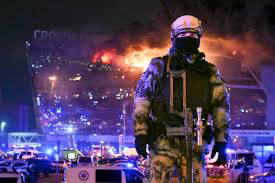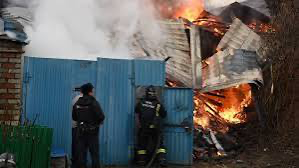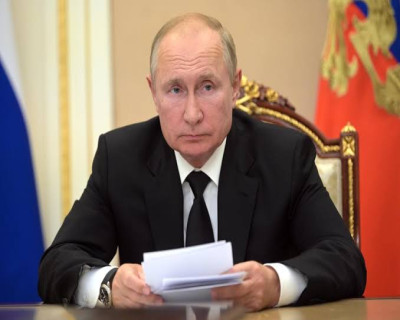ROME – In Italy, Church leaders at both the national and local levels are conceiving a plan of action for the so-called “phase 2” of recovery from the COVID-19 coronavirus pandemic.
Though details are sparse, most are focusing on getting back to regular liturgical life and preparing for possible social tensions caused by greater poverty and unemployment rates.
Speaking to Italian newspaper Il Fatto Quoditiano, secretary general of the Italian Bishops’ Conference (CEI) Father Ivan Maffeis said that bishops have tentatively proposed Sunday, May 3, as a date to restart public Masses, funerals, baptisms and marriages, provided that proper social distance is maintained, and that attendees wear masks and gloves.
The Italian government is set to roll back some of its tight restrictions May 4, and Catholics are finding it harder to accept the suspension of liturgical life, with many people complaining that if tobacco shops, grocery stores and children’s clothing stores are open, then large and spacious churches where people have plenty of room to spread out also ought to be open for the sacraments.
“With all the attention required by the emergency, we must return to living in the church, the country has a profound need for it,” Maffeis said, adding that “the is an enormous demand and to respond means making a contribution to social cohesion.”
On Friday, representatives of CEI met with government officials to discuss proposals for starting up public Masses and holding funerals. Following the meeting, the bishops were set to revise their proposals and send in a new draft.
In the north, the Archdiocese of Milan has asked Catholics to send suggestions for a “phase 2” to a special email address.
In an April 21 communique posted to their website, the archdiocese asked the faithful for “ideas and good practices” on different areas of ecclesial life, from restarting of public liturgies, to the reopening of oratories and charitable initiatives.
Each of the suggestions will be shared with the prefecture of the archdiocese in a special session dedicated to discussion these issues. They will then be sent to the CEI, which in turn is expected to bring them to the table in discussions with the national government.
Curial Moderator for the Milan archdiocese, Msgr. Bruno Marinoni, said that since “phase 2” is expected to last for quite a while, “we wish to start a constant dialogue with the Christian communities and all People of God, who will help the archdiocese to accompany the [Church in Milan] in interpreting this very particular moment with shared pastoral indications.”
On Wednesday, Vatican Secretary of State Cardinal Pietro Parolin and the heads of all Vatican departments also met to discuss the Holy See’s own “phase 2” plan beginning in May.
No details of the plan were immediately available, however, according to a Vatican communique, “the efforts made by the Holy See to deal with the crisis in a sustainable way” was a key talking point.
A “gradual reactivation of ordinary services” was decided on, “while safeguarding the health precautions to limit contagion, so as to ensure service to the Holy Father and the Universal Church,” it said.
Yet apart from institutional plans to get back to work and provide access to the sacraments, several charitable organizations are also preparing for a new wave of activity as poverty levels increase and many people are finding themselves in need for the first time in their lives.
In an article published on the website of SIR, the official news site for the Italian bishops, Giovanni Bruno, president of Italy’s national food bank, said that the lifting of quarantine restrictions, even gradually, will not make the social problems caused by the coronavirus go away.
On the contrary, “the figures are destined to increase,” he said, noting that in the southern Italian town of Cosenza, the number of people the food bank help in two weeks has exploded from 60 to 600.
Across the country, there has been a 40 percent increase in the number of people they assist, Bruno said, noting that the regions most in need are all in the south: Campania, Calabria, and Sicily.
Normally there are around 1,800 volunteers who work to distribute food to the roughly 7,500 charitable entities that use the food bank’s services, however, since the coronavirus this number has dropped to around 12-1300, meaning that demand has increased but the ability to supply is being stretched.
In total, the food bank supports around 1.5 million people who live in poverty throughout Italy, and Bruno believes this number will grow in the coming months as people who have never been in need suddenly find themselves unable to feed their families since they have been out of work.
“Before one or two calls from individual citizens arrived to our national switchboard” on a daily basis, he said, noting that since the outbreak began, “now dozens of people call us every day.”
“They are worried because they don’t know who to ask for help, they don’t know how to feed their children. They are ashamed to find themselves in difficulty for the first time,” he said.
Yet thanks to increased fundraisers and solidarity campaigns, the usual contributors have provided even more, and new companies in the food industry which previously did not partner with the food bank have started to contribute. In some prisons, inmates have even launched their own campaigns to raise money in order to donate to the food bank, Bruno said, voicing hope that “solidarity will not fail” as recovery continues.
Caritas, a network of Catholic charities, has also launched several initiatives aimed at fighting poverty and providing a buffer for families without income.
In an April 22 communique, Caritas’s Italian branch warned against two potential dangers as the country prepares for a the next phase in its recovery: “On the one hand, the spread of impoverishment and the worsening of inequalities, and, on the other, the emergence of new social tensions” related to increased poverty and inequality.
To avoid these, “it is necessary to act quickly and decisively. This responsibility belongs to everyone and involves both personal choices and the decisions of public institutions,” the statement said, insisting that Caritas will support all operational proposals to immediately tackle the drop in household income, “beginning with the poorest.”
Among the proposals Caritas Italy supports is a plan for “universal social protection against crisis” drafted by the Diversity Inequalities Forum, of which Caritas Italy is a member, and the Italian Alliance for Sustainable Development.
As they go forward, Caritas Italy said it will be operating on three main priorities: Implementing an “extraordinary intervention” on behalf of the poor in terms of assistance and poverty prevention; helping the whole of Italy, supporting each person “according to their needs and evaluating their resources”; and planning for the future, meaning that as soon as “phase 2” is implemented, they will begin planning for “phase 3.”
Father Francesco Soddu, director of Caritas Italy, was also among the signatories of a letter sent to the government asking for a welfare plan fit for “all people and territories” in response to COVID-19, and to have a seat at the table in drafting a “phase 2” plan.
In Bologna, Cardinal Matteo Zuppi has launched a new initiative called the “San Petronio Fund” to help needy families in the area. The concept is similar to the “Five Loaves and Two Fish” campaign launched by Cardinal Carlo Caffarra, archbishop emeritus of Bologna, in the wake of the 2008 economic crisis.
Managed by the Bologna archdiocese’s local Caritas office, the new fund will make 1 million euros (roughly 1.1 million dollars) available to those who need support, with 400 euros offered per individual; 500 for couples; 600 for couples with one child; 700 for couples with two children; and 800 for couples with three children. Families must fill out a module indicating current income and providing proof of their loss of employment, as well as information on assistance they are receiving from other organizations.
It’s clear from the activities of the CEI, Caritas and other charitable organizations that as the Italian government outlines their “phase 2” plan, the Catholic Church won’t be a silent player as discussions go forward.







